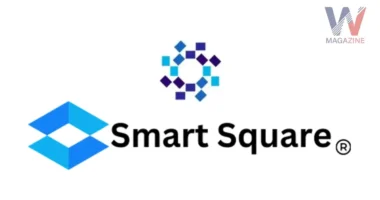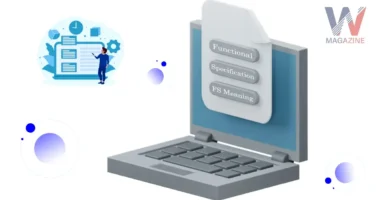Table of Contents
- Keep Your Server Updated
- Harden TLS and Cipher Settings
- Enforce Strong Certificates & PKI
- Use Multi-Factor Authentication (MFA)
- Configure Firewalls & Network Access
- Monitor & Log All Activity
- Limit Permissions & Lock Down Service
- Enable Load Balancing & High Availability
- Test Security Regularly
- Secure Hybrid Environments
- Quick Reference Checklist
- Conclusion
A Client Access Server plays a critical role in handling client connections to Exchange or similar environments. Protecting it is essential. This clear, user-friendly guide helps you understand each step, why it matters, and how to do it, using everyday language and staying current with Google’s EEAT principles.
Keep Your Server Updated
Using outdated software is one of the easiest ways attackers can find their way in. Always install the latest cumulative updates (CUs) and security patches for your server and OS.
- Exchange admins, apply the 2025 H1 Cumulative Update, which includes crucial security fixes and hybrid deployment improvements.
- Use tools like Exchange HealthChecker to check patch status before updating.
- Staying current keeps known vulnerabilities out of reach.
Harden TLS and Cipher Settings
Encrypted connections protect data in transit. Ensure that only modern and secure protocols like TLS 1.2 and TLS 1.3 are enabled, along with strong cipher suites for safe communication. Disable older versions (TLS 1.0/1.1).
- Microsoft provides a TLS hardening guide with step-by-step instructions and testing advice via HealthChecker.
- Use ECDHE and AES-GCM cipher suites and enable forward secrecy (ECC) for better security. Proper encryption thwarts eavesdropping and man-in-the-middle attacks.
Enforce Strong Certificates & PKI
SSL/TLS certificates authenticate your server. Opt for valid, trusted certificates from a recognized CA, and manage them through a Public Key Infrastructure (PKI) system.
- Track certs via a directory; renew before expiry.
- Use X.509v3 to support mutual authentication and extra client checks.
- Automate checks and renewal processes.
This ensures clients always verify your server properly.
Use Multi-Factor Authentication (MFA)
Passwords alone aren’t enough. Turning on multi-factor authentication (MFA), which pairs a password with a second verification step, greatly strengthens your server’s security.
- Where possible, configure RADIUS- or AD-based MFA for all administrative and client logins.
- Alternatively, use OTP (one-time passcodes) or phone apps.
- MFA is a simple way to block breaches even if credentials leak.
Configure Firewalls & Network Access
Limit who can reach your server. Use firewalls to:
- Only allow necessary ports (HTTPS 443, maybe 587 for SMTP-over-TLS).
- Limit access so that only approved IP addresses or users connected through a secure VPN can reach the server.
- Isolate the server in its subnet or VLAN.
This keeps attackers from reaching unsecured services.
Monitor & Log All Activity
You can’t fix security gaps unless you see them. Enable detailed logging:
- Track authentication attempts and errors.
- Monitor changes like permission or config updates.
- Use tools to alert on unusual patterns or multiple failures.
- Consider third-party solutions like Lepide or Blumira for full monitoring and alerting.
Active monitoring helps catch attacks before damage happens.
Limit Permissions & Lock Down Service
Follow the principle of least privilege:
- Only assign admin rights to those who need them.
- Disable services like POP/IMAP unless needed.
- Don’t let admins use elevated rights for daily tasks.
- This reduces what’s exposed if credentials are stolen.
Enable Load Balancing & High Availability
Security also includes resilience. Set up load balancing and failover systems.
- Use multiple Client Access Servers behind a load balancer.
- Make sure TLS configs are consistent across all servers.
This supports uninterrupted service even during attacks or outages.
Test Security Regularly
Routine checks help maintain safeguards:
- Use health-check tools like Microsoft’s HealthChecker to audit TLS and patch status.
- Run penetration tests or vulnerability scans quarterly.
- Keep an eye on threat intel and patch anything critical fast.
- Consistent reviews catch new weaknesses before they’re exploited.
Secure Hybrid Environments
If your Client Access Server is part of a hybrid cloud setup (like Exchange hybrid), be aware of added steps:
- Migrate to dedicated hybrid apps as per Microsoft’s Secure Future Initiative
- Monitor and disable deprecated features like EWS in favor of the Graph API.
- Ensure TLS and cert policies apply across on-prem and cloud links.
Hybrid setups add complexity; security needs to cover both sides.
Quick Reference Checklist
| Step | Action |
|---|---|
| 1 | Patch OS & Exchange CU updates ASAP |
| 2 | Enforce TLS 1.2/1.3 + secure cipher suites |
| 3 | Use valid certs via PKI, automating renewals |
| 4 | Turn on MFA for all logins |
| 5 | Lock down firewalls to needed ports/IPs |
| 6 | Enable logging, monitoring, and alerts |
| 7 | Restrict admin rights; disable unused services |
| 8 | Set up load balancing and HA |
| 9 | Conduct regular audits and scans |
| 10 | Securely manage hybrid deployment elements |
Conclusion
Securing your Client Access Server is essential to protecting your Exchange environment from modern threats. By keeping software up to date, enforcing strong encryption, using MFA, and actively monitoring activity, you create a layered defense that’s both effective and future-ready. Regular audits and strict access controls ensure your system stays resilient. With these steps, you’re not just securing a server, you’re safeguarding your entire organization.









